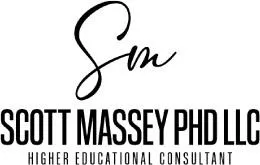BLOG
SCOTT'S THOUGHTS

Volume 4: The Sample DEI Action Plan
Thanks for joining us once more. Over the last few weeks, we have been building up to DEI Action Plans, starting with the “why” and then the “how,” to create a workable mission statement and goals for your program’s DEI committee to produce. Now is the time to take everything established and create the DEI Action Plan. Of course, this will be program-specific, but we have laid out some comprehensive examples to show the components to consider and include.
The examples are set out under categories of DEI and then by procedures for faculty/staff and students.
Timelines are subjective, depending on what your program may already be doing and the complexity of the action plan. Building an outreach program doesn’t happen overnight and must build momentum; using best recruitment practices will depend on whether you have open positions.
Action Plan: Recruitment Diversity
Faculty/Staff
The program will implement DEI best practices for open staff and faculty positions by developing inclusive job descriptions and posting opportunities across diverse platforms to reach a broad range of candidates.
Institutional Resource: Human Resources (HR will be well-versed in best practices for creating diverse job descriptions and postings that reach a broad range of candidates.)
Timeline: Established
Assessment: Job descriptions, position postings
Students
The program will identify and increase recruitment from undergraduate institutions that graduate diverse student populations with the prerequisite knowledge, skills, and abilities to succeed in our program.
Institutional Support/Resource: Graduate Admissions (With the help of your graduate admissions team, target recruitment in undergraduate institutions that graduate a diverse student population with sufficient science scores to predict success in your program.) Also: Community outreach.
Timeline: Year 2 (2026)
Assessment: Admissions recruitment materials/policies
Action Plan: Recruitment Equity
Faculty/Staff
Ensure that job postings and application processes are equitable and accommodate diverse needs.
Institutional Resource: Human Resources
Timeline: Immediate; ongoing for open positions
Students
Hold informational sessions focusing on financial aid options that level the playing field.
Institutional Resource: Financial Aid office/Resource
Timeline: Year 1
Action Plan: Recruitment Inclusion
Faculty/Staff
Conduct inclusive hiring practices training for search committees. (Most institutions are already doing this, and human resources will likely have training available. Remember to give yourself credit for the things you’re already doing!)
Institutional Resource: Human Resources
Timeline: Immediate and Ongoing for open positions
Students
Engage prospective students through campus visits emphasizing the inclusive culture. (i.e., During interviews, we will ask current students to speak to applicants about the culture in the program and what student life is like.)
Institutional Resource: Admissions Office
Timeline: Year 1
Assessment: Prospective students complete a survey on how they felt about the inclusiveness of the program and campus. Did they feel like this was a campus they could see themselves being a part of?
Action Plan: Retention Diversity
Faculty/Staff
We will implement professional development programs focused on DEI, mentorship, and leadership opportunities. (How does a program keep its best people? Will we implement a professional development program focusing on DEI, mentorship, and leadership opportunities? Who could we contact? Establish how training or mentoring should happen.)
Institutional Resource: DEI Office
Timeline: Established
Assessment: Retention records; Faculty Survey
Students
Students will be assigned mentors with similar life experiences to engage and prepare them for PA training.
Institutional Resource: Budget for mentor lunches or events
Timeline: Established
Assessment: Climate Survey
Action Plan: Retention Equity
Faculty/Staff
Facilitate workshops on fair and equitable evaluation practices. (We should all be evaluated similarly through a standardized process. We need workshops to train our faculty and staff to know what they’ll be evaluated on. We can also help staff and faculty members develop personal goals for their growth.)
Institutional Resource: HR/Faculty Senate/Provost Office
Timeline: Year 3
Students
Offer comprehensive advising services and peer support networks with equal student access. (Consider: What does tutoring look like? What are our library and IT resources?)
Institutional Resource: Student Support Services
Timeline: Year 1
Assessment: End-of-Curriculum and End-of-Didactic-Year surveys
Action Plan: Retention Inclusion
Faculty/Staff
Maintain an inclusive onboarding program that builds immediate connections with current staff and faculty. (A program has a particular culture, starting at the top. What could your program do as part of the onboarding process to build the culture within your faculty and staff?)
Institutional Resource: HR/Faculty Senate/Provost Office
Timeline: Year 3
Students
Implement inclusive teaching strategies in the classroom. (These strategies could include subjects such as: What language do we use to teach? What language is used in our handbooks? Are we using he/she or gender-neutral terminology? Could someone look at our handbook to ensure it is inclusive?)
Institutional Resource: Teaching and Learning Office (Many resources, including simple online searches, assist faculty and staff with inclusive teaching strategies.)
Timeline: Year 1
Conclusion
I hope you’ve enjoyed this recap of Dr. Johnna Yealy and Dr. Tina Butler’s webinar series on creating DEI Action Plans. DEI is a responsibility that healthcare professionals can’t take lightly, and we believe in ensuring that PA programs provide and teach the value of diversity, equity, and inclusion.
Remember that our webinars at Scott Massey PhD, LLC are always free! I’ll be back again next week with more to share.

Volume 4: The Sample DEI Action Plan
Thanks for joining us once more. Over the last few weeks, we have been building up to DEI Action Plans, starting with the “why” and then the “how,” to create a workable mission statement and goals for your program’s DEI committee to produce. Now is the time to take everything established and create the DEI Action Plan. Of course, this will be program-specific, but we have laid out some comprehensive examples to show the components to consider and include.
The examples are set out under categories of DEI and then by procedures for faculty/staff and students.
Timelines are subjective, depending on what your program may already be doing and the complexity of the action plan. Building an outreach program doesn’t happen overnight and must build momentum; using best recruitment practices will depend on whether you have open positions.
Action Plan: Recruitment Diversity
Faculty/Staff
The program will implement DEI best practices for open staff and faculty positions by developing inclusive job descriptions and posting opportunities across diverse platforms to reach a broad range of candidates.
Institutional Resource: Human Resources (HR will be well-versed in best practices for creating diverse job descriptions and postings that reach a broad range of candidates.)
Timeline: Established
Assessment: Job descriptions, position postings
Students
The program will identify and increase recruitment from undergraduate institutions that graduate diverse student populations with the prerequisite knowledge, skills, and abilities to succeed in our program.
Institutional Support/Resource: Graduate Admissions (With the help of your graduate admissions team, target recruitment in undergraduate institutions that graduate a diverse student population with sufficient science scores to predict success in your program.) Also: Community outreach.
Timeline: Year 2 (2026)
Assessment: Admissions recruitment materials/policies
Action Plan: Recruitment Equity
Faculty/Staff
Ensure that job postings and application processes are equitable and accommodate diverse needs.
Institutional Resource: Human Resources
Timeline: Immediate; ongoing for open positions
Students
Hold informational sessions focusing on financial aid options that level the playing field.
Institutional Resource: Financial Aid office/Resource
Timeline: Year 1
Action Plan: Recruitment Inclusion
Faculty/Staff
Conduct inclusive hiring practices training for search committees. (Most institutions are already doing this, and human resources will likely have training available. Remember to give yourself credit for the things you’re already doing!)
Institutional Resource: Human Resources
Timeline: Immediate and Ongoing for open positions
Students
Engage prospective students through campus visits emphasizing the inclusive culture. (i.e., During interviews, we will ask current students to speak to applicants about the culture in the program and what student life is like.)
Institutional Resource: Admissions Office
Timeline: Year 1
Assessment: Prospective students complete a survey on how they felt about the inclusiveness of the program and campus. Did they feel like this was a campus they could see themselves being a part of?
Action Plan: Retention Diversity
Faculty/Staff
We will implement professional development programs focused on DEI, mentorship, and leadership opportunities. (How does a program keep its best people? Will we implement a professional development program focusing on DEI, mentorship, and leadership opportunities? Who could we contact? Establish how training or mentoring should happen.)
Institutional Resource: DEI Office
Timeline: Established
Assessment: Retention records; Faculty Survey
Students
Students will be assigned mentors with similar life experiences to engage and prepare them for PA training.
Institutional Resource: Budget for mentor lunches or events
Timeline: Established
Assessment: Climate Survey
Action Plan: Retention Equity
Faculty/Staff
Facilitate workshops on fair and equitable evaluation practices. (We should all be evaluated similarly through a standardized process. We need workshops to train our faculty and staff to know what they’ll be evaluated on. We can also help staff and faculty members develop personal goals for their growth.)
Institutional Resource: HR/Faculty Senate/Provost Office
Timeline: Year 3
Students
Offer comprehensive advising services and peer support networks with equal student access. (Consider: What does tutoring look like? What are our library and IT resources?)
Institutional Resource: Student Support Services
Timeline: Year 1
Assessment: End-of-Curriculum and End-of-Didactic-Year surveys
Action Plan: Retention Inclusion
Faculty/Staff
Maintain an inclusive onboarding program that builds immediate connections with current staff and faculty. (A program has a particular culture, starting at the top. What could your program do as part of the onboarding process to build the culture within your faculty and staff?)
Institutional Resource: HR/Faculty Senate/Provost Office
Timeline: Year 3
Students
Implement inclusive teaching strategies in the classroom. (These strategies could include subjects such as: What language do we use to teach? What language is used in our handbooks? Are we using he/she or gender-neutral terminology? Could someone look at our handbook to ensure it is inclusive?)
Institutional Resource: Teaching and Learning Office (Many resources, including simple online searches, assist faculty and staff with inclusive teaching strategies.)
Timeline: Year 1
Conclusion
I hope you’ve enjoyed this recap of Dr. Johnna Yealy and Dr. Tina Butler’s webinar series on creating DEI Action Plans. DEI is a responsibility that healthcare professionals can’t take lightly, and we believe in ensuring that PA programs provide and teach the value of diversity, equity, and inclusion.
Remember that our webinars at Scott Massey PhD, LLC are always free! I’ll be back again next week with more to share.
Don't miss out on future events!
Subscribe to our newsletter

© 2025 Scott Massey Ph.D. LLC

